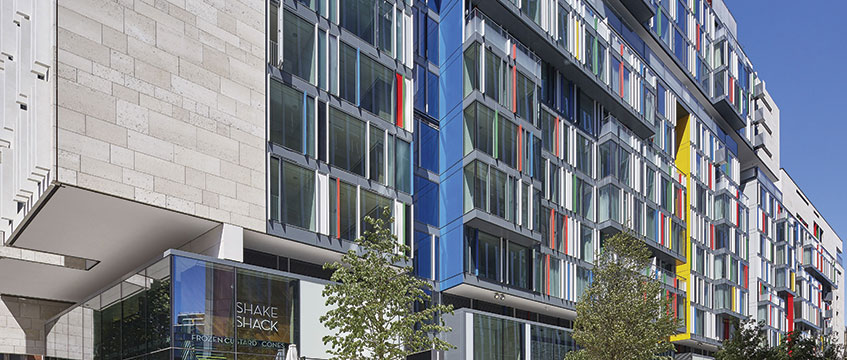Making the most of mixed-use development
Legal
by
Thomas Nolan, Laura Gowing, Deepa Deb and Bryan Johnston
The political/economic climate is uncertain. However, uncertainty brings opportunity. A weak pound for example makes UK property an attractive investment. Rising interest rates enhance the rental investment sector. Regardless of what Brexit looks like, uncertainty is inevitable beyond 29 March.
Technology is also driving sector change. It has had a profound impact in different ways on retail and logistics. It is changing the office market in terms of how people work and the spaces they need to work in.
“It’s the experience, stupid!” colloquially sums up the direction of travel of key property sectors. Experience is likely to be a differentiating factor in property, especially in the retail and residential sectors.
The political/economic climate is uncertain. However, uncertainty brings opportunity. A weak pound for example makes UK property an attractive investment. Rising interest rates enhance the rental investment sector. Regardless of what Brexit looks like, uncertainty is inevitable beyond 29 March.
Technology is also driving sector change. It has had a profound impact in different ways on retail and logistics. It is changing the office market in terms of how people work and the spaces they need to work in.
“It’s the experience, stupid!” colloquially sums up the direction of travel of key property sectors. Experience is likely to be a differentiating factor in property, especially in the retail and residential sectors.
Retailers and retail centres need to adapt to stay “relevant”. Similarly, in the residential market, the experience on offer will affect rental levels and capital value. Experience is of course “baked in” to certain mixed-use applications, making it an attractive investment platform.
Looking ahead, opportunities may exist in areas where retail is receding. Residential conversion of parts of former retail space may be viable. In light of logistics growth, the mixed-use concept of “beds and sheds” may generate further momentum, although creating a sense of place here will be a key challenge not faced in more traditional residential areas.
Build to rent
Regardless of the political and economic climate, people still need places to live. There is an undersupply of housing, so demand is strong. This makes residential an attractive investment. What that investment looks like is changing. Build-to-rent (BTR) is a growth area, and attractive investment conditions may tempt US multi-family developers/operators into this market. Residential investment beyond the South East is attractive too based on capital growth.
We are experiencing societal, political and economic uncertainty. In real-estate terms, mixed-use merits consideration as an asset class from a development and investment perspective to hedge against, and indeed embrace, such uncertainty.
In addition to the uncertainty outlined above, there have been significant demographical changes in society. We are now living in the era of the global citizen, one who is mobile across the globe and demands to work and live in an agile fashion. Further, those in positions of responsibility can be held to account via social media.
The Minister of State for Housing Kit Malthouse has been quoted as confirming housing delivery needs to be “more, better, faster”, code for diverse housing delivery linked to need.
Ready-made community
Current trends in the UK residential sector indicate that those needs have changed: home ownership is no longer the be all and end all. Being plugged into a ready-made community, with on-site management and access to a full suite of services ranging from same-day dry cleaning, 24-hour concierge through to dating apps, is top of the wish list for today’s residential renter.
Equally, accommodation needs to be flexible; renters do not want to be tied in to either too short-term or long-term agreements.
Transparency on costs is a prerequisite hence the trend toward dispensing with agents’ fees, inventory fees and even deposits in favour of an all-inclusive rent which includes top-of-the-range broadband access.
It is clear that a “people/service first” approach needs to be adopted and this is precisely why purpose-built, institutionally owned BTR accommodation remains very much in vogue.
Investors are prepared to compromise capital growth in favour of longer-term, more secure income underpinned by changes in the way society now wishes to work and live. There appears to be sufficient space in the BTR market to accommodate different models of offering from the co-living concept provided by The Collective at Old Oak through to Quintain’s Wembley Park.
There have also been advances in planning, design, delivery and management, all of which have contributed to growing confidence in what remains a nascent sector of the UK market.
Outlook for BTR
Ian Fletcher, director of policy (real estate) at the British Property Federation (BPF), notes that BTR “continues to perform well, with our statistics showing a 22% increase in the development pipeline during 2018, to 139,500 units”.
Although the sector started its growth in London, Fletcher highlights that “strong growth has occurred in the regions over the past year and that should continue in 2019 as the benefits of BTR are embraced by a number of core cities and other regional centres, meaning BTR is now truly UK wide”.
Challenges remain around valuation (owing to the lack of stabilised income comparables at this stage), availability of debt and equity funding and proactive government support for BTR as being part of the solution to the housing crisis in the UK.
However, all indicators point to the BTR sector being here to stay. The BPF has estimated that it could drive property investment to £70bn by 2022, with the potential to reach at least 240,000 homes built specifically for private rent by 2030. The focus on customer experience will inevitably compel the UK rental market into being a more service-focused industry, which will result in higher standards, and that can only be good for the market as a whole.
The success of BTR is in part owing to the fact that it is often only one element in a larger scheme that incorporates other uses. For example, you might mix BTR with retail or offices. By doing so the sector is creating some of the best opportunities for creating vibrant, desirable living places for the future.
It is a strategy that the retail sector is also adopting. As traditional retailers battle against the rise of internet shopping and forward-thinking brands focused on consumer experience, we are seeing the lines between discrete uses blurring.
Retail space is now often mixed with dining and leisure experiences to create a more compelling combined offering.
Place-making
At the heart of these patterns is a desire for place-making and community building. Keen to further these aims the government has found time, notwithstanding Brexit, to consider reforms to improve residential practices, which often play a central role in mixed-use schemes.
One example is the government’s intention to impose a statutory cap on ground rents for new long residential leases. However, while commentators agree that ground rents should not be onerous, concerns have been raised that a cap would hinder residential mixed-use developments.
The BPF has noted that ground rent income provides “an absolute incentive for appropriate building management by a professional landlord” and questions have been raised about what would happen if that incentive were to be taken away.
Another example is the proposed revival of commonhold. The commonhold model, largely ignored and at worst feared by the market, does not at present lend itself to mixed-use schemes as it inflexibly requires all unit owners within a building to be members of a single commonhold.
The Law Commission has suggested that introducing a concept of different sections of a commonhold, dealing with different uses and their demands, could encourage the expansion of the commonhold tenure.
However, there is a reluctance to test completely new structuring approaches, particularly in difficult markets.
Whether expanding commonhold and reforming leaseholds in favour of the end consumers can create better mixed-use communities, remains to be seen.
Thomas Nolan is an associate, Laura Gowing is a senior associate and Deepa Deb and Bryan Johnston are partners at Dentons











